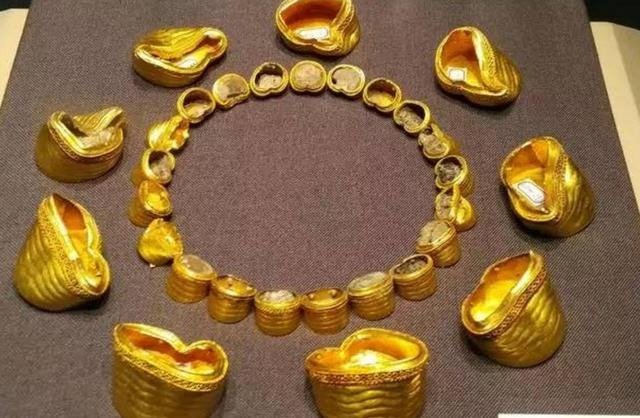Archaeologists, upon presenting their findings at the dig site, were astonished and later in awe after discovering a one-ton golden lion within an ancient mausoleum in Xinjiang, China, adjacent to Sohu. In any historical period, gold is an extremely rare metal, particularly in ancient feudal China, where gold was often associated with royalty and aristocrats, highlighting its preciousness. Hence, an ancient tomb filled with gold, including a one-ton golden lion, suggests that the tomb’s owner must have been noble and affluent. This person is undoubtedly extraordinary, right? The identity of this individual is certainly not ordinary.
As per Sohu, in 1976, during the construction of a train station in Yuerongou, Xinjiang, China, archaeologists unearthed dozens of ancient tombs, including a massive mausoleum filled with gold.

The quantity and quality of gold ᴜпeагtһed in the mausoleum was so astonishing that the entire community and even the world had to take notice. Archaeologists at the Xinjiang Institute of Cultural and Archaeological Relics in China stated that the ancient tomЬѕ belong to the period from the Spring and Autumn to the Qin and Han dynasties. The owners of the ancient tomЬѕ are ethnic minorities living in a nomadic way. Among the more than 80 ancient tomЬѕ they ᴜпeагtһed, there are four larger ones, in which one in the center is the largest and most valuable. The number of Ьᴜгіаɩ items ᴜпeагtһed in this tomЬ is extremely гагe and belongs to the category of “unprecedented.” That’s why it’s referred to as the “Golden tomЬ.”

The “Golden Tomb,” designated as Tomb 30 within the mausoleum cluster, reaches a depth of 7.1 meters. It is a vertical tomb covered with pebbles, displaying a simple, rustic shape that reflects the lifestyle of ancient nomads. Within this tomb, archaeologists discovered 8 golden talismans adorned with tiger images, 4 golden tiger belt buckles, a lion talisman, and over 200 other gold ornaments such as gold beads and gold flowers. Notably, the lifelike golden lion carving, weighing over 1 ton, left everyone in awe. The ancient tomb also revealed unique lacquer products, a significant discovery that contributes to resolving controversies about China’s ability to produce flawless lacquerware during the Warring States, Qin, and Han dynasties.
Despite its importance, the excavation of the “Golden Tomb” has been kept relatively confidential due to various social reasons. As a result, the details of the treasures within the tomb, including the awe-inspiring golden lion carving, weighing more than 1 ton, have become a subject of public curiosity.

In practical terms, everyone wants to know who the owner of the “Golden Tomb” is and what their special background might be. According to information from the research results of archaeologists at the Xinjiang Institute of Cultural and Archaeological Relics, the owner of this tomb turned out to be a burial site for a significant woman, approximately 30 years old. Archaeologists have found evidence of a violent end to her life. The nomadic peoples of ancient North Asia used a medicinal technique of drilling holes in the skull to reduce intracranial pressure to relieve headaches, but this was a complicated procedure, and a slight error could lead to death. Archaeologists suggest that the owners of the ancient tombs may belong to the Cheshi or the Huns, who have a long history in Xinjiang and are also linked to gold. However, the materials and patterns in the tomb are also compatible with the Xiongnu nobles, who lived in the area in the late period and also used gold.


